New Hubble View Of Galaxy Cluster Abell 1689 By Hubble Space Telescope / ESA

New Hubble view of galaxy cluster Abell 1689 by Hubble Space Telescope / ESA
More Posts from Sidusglacies and Others

Asteroid J002E3’s orbit in 2002-2003.
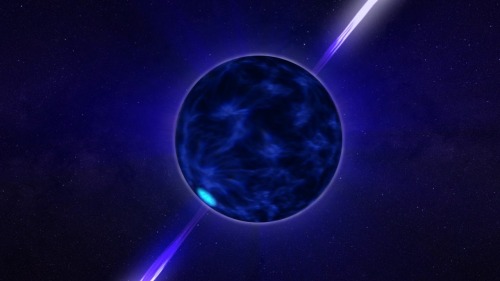
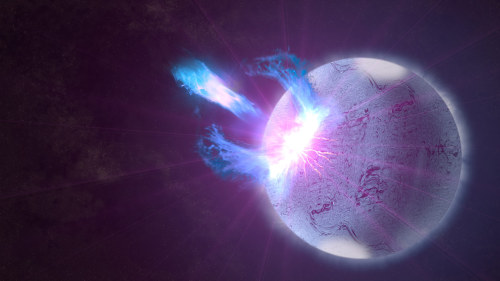
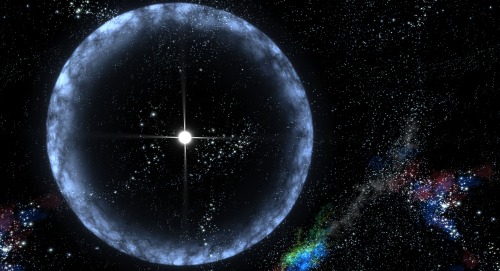
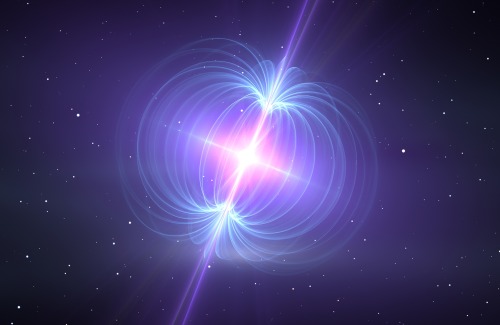
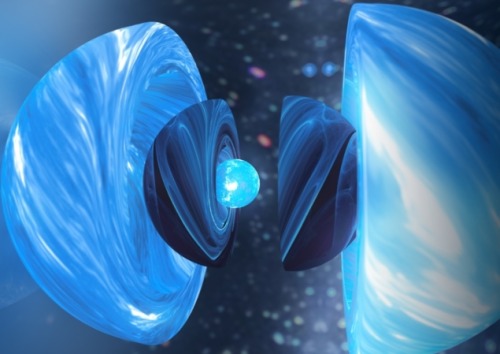
Starquakes
Sometimes a neutron star will undergo a glitch, a sudden small increase of its rotational speed or spin up. Glitches are thought to be the effect of a starquake—as the rotation of the neutron star slows, its shape becomes more spherical. Due to the stiffness of the “neutron” crust, this happens as discrete events when the crust ruptures, creating a starquake similar to earthquakes. After the starquake, the star will have a smaller equatorial radius, and because angular momentum is conserved, its rotational speed has increased.
Starquakes occurring in magnetars, with a resulting glitch, is the leading hypothesis for the gamma-ray sources known as soft gamma repeaters.
Recent work, however, suggests that a starquake would not release sufficient energy for a neutron star glitch; it has been suggested that glitches may instead be caused by transitions of vortices in the theoretical superfluid core of the neutron star from one metastable energy state to a lower one, thereby releasing energy that appears as an increase in the rotation rate. (source)
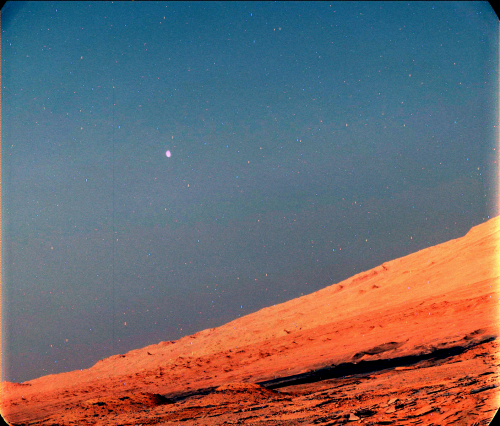
Mars Moon Phobos Seen At Martian Twilight

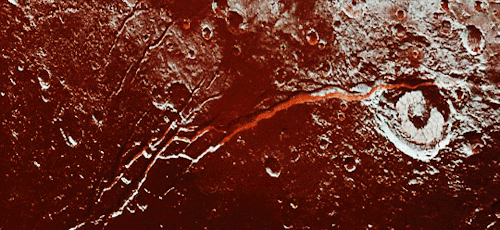
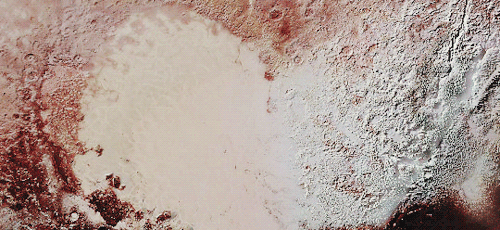
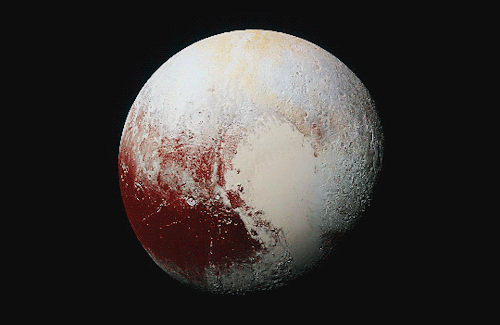
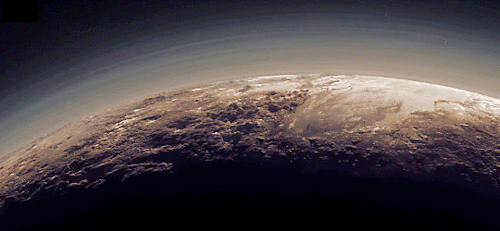
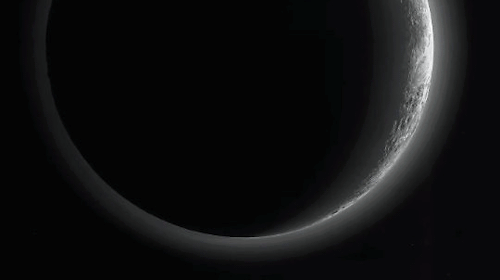
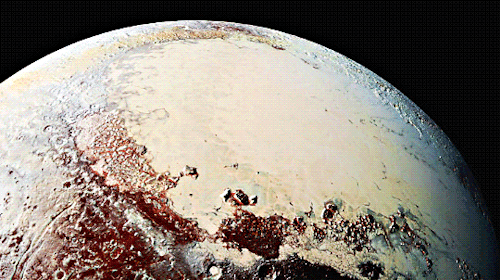
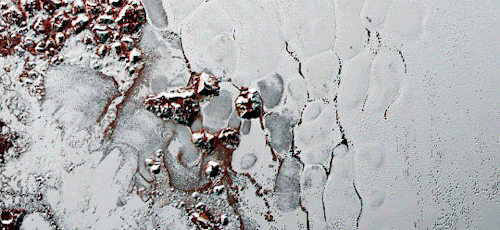

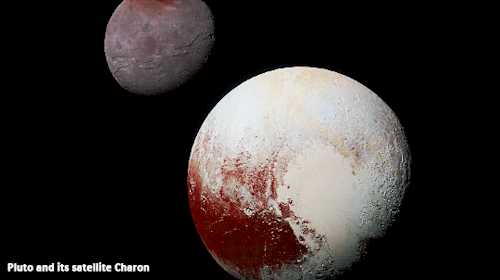
Pluto as seen from NASA’s New Horizons spacecraft ; Its heart-shaped sea is filled with poisonous ice.





Astronaut Alexander Gerst’s photos of category 5 Supertyphoon Trami that was headed for Japan and Taiwan in late September, 2018. In Alexander’s own words, it was “As if somebody pulled the planet’s gigantic plug”.⠀ ⠀ (@astro_alex_esa)

A spiral in the Air Pump by Hubble Space Telescope / ESA
Huge news! Astronomers using the Hubble space telescope have discovered water in the atmosphere of an exoplanet in its star’s habitable zone. If confirmed, it will be the first time we’ve detected water—a critical ingredient for life as we know it—on an exoplanet. The water was detected as vapour in the atmosphere, but the temperature of the planet means it could sustain liquid water on its surface, if it’s rocky.
The planet is called K2-18b, and it’s about 110 light years away. The planet is much different than Earth. It’s a Super-Earth, and it’s twice as large as Earth, and about 8 times as massive. K2-18b is orbiting a red dwarf star, and it was first discovered in 2015 by the Kepler Space Telescope.
Dr. Angelos Tsiaras (UCL Centre for Space Exochemistry Data, CSED), said: “Finding water on a potentially habitable world other than Earth is incredibly exciting. K2-18b is not ‘Earth 2.0’ as it is significantly heavier and has a different atmospheric composition. However, it brings us closer to answering the fundamental question: Is the Earth unique?”
The team behind the discovery developed algorithms and ran archived Hubble data from 2016 and 2017 through them. They analyzed starlight from the red dwarf star as it passed through the exoplanet’s atmosphere. They discovered the molecular signature of water, as well as hydrogen and helium.
This discovery needs follow-up observations to confirm it. We also need better telescopes to study its atmosphere in greater detail, and the atmospheres of other exoplanets. Two telescopes on the horizon will tackle that job. The James Webb Space Telescope will have the powerful capability to examine the atmospheres of exoplanets, which is really the next step in understanding all of the exoplanets found by Kepler, and which will be found by TESS.
The ESA’s ARIEL (Atmospheric Remote-sensing Infrared Exoplanet Large-survey) mission will launch in 2028 and will study the atmospheres of about 1000 exoplanets in detail. ARIEL, along with the JWST, will give us a much better understanding of K2-12b and exoplanets like it.
Light pillars are a rare optical phenomenon in which ice crystals in the atmosphere reflect sources of light in a vertical formation. Long, illuminated beams can form above or below sources of artificial or natural light due to the air being extremely cold.


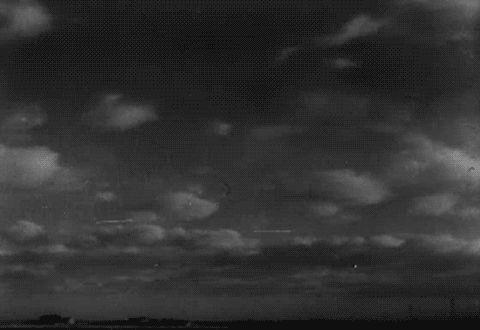
Le Tempestaire (Jean Epstein, 1947)
-
 fatalspiritualflaw liked this · 4 years ago
fatalspiritualflaw liked this · 4 years ago -
 lovefrequency liked this · 4 years ago
lovefrequency liked this · 4 years ago -
 eth3real-ess3nce reblogged this · 4 years ago
eth3real-ess3nce reblogged this · 4 years ago -
 mischievouslyliteral liked this · 4 years ago
mischievouslyliteral liked this · 4 years ago -
 enwhyseelife liked this · 4 years ago
enwhyseelife liked this · 4 years ago -
 mi-piel-canela reblogged this · 4 years ago
mi-piel-canela reblogged this · 4 years ago -
 2boldlyqueer reblogged this · 4 years ago
2boldlyqueer reblogged this · 4 years ago -
 meatcrumbs liked this · 4 years ago
meatcrumbs liked this · 4 years ago -
 dube82 liked this · 4 years ago
dube82 liked this · 4 years ago -
 katewhhite reblogged this · 4 years ago
katewhhite reblogged this · 4 years ago -
 dreamsfr0myesterday reblogged this · 4 years ago
dreamsfr0myesterday reblogged this · 4 years ago -
 lalala-lina reblogged this · 4 years ago
lalala-lina reblogged this · 4 years ago -
 darkgriffin5785 liked this · 4 years ago
darkgriffin5785 liked this · 4 years ago -
 mostafa18xl liked this · 4 years ago
mostafa18xl liked this · 4 years ago -
 justagentleman718 reblogged this · 4 years ago
justagentleman718 reblogged this · 4 years ago -
 justagentleman718 liked this · 4 years ago
justagentleman718 liked this · 4 years ago -
 tanet0412 liked this · 4 years ago
tanet0412 liked this · 4 years ago -
 decadentavenue76 liked this · 4 years ago
decadentavenue76 liked this · 4 years ago -
 arturh67 liked this · 4 years ago
arturh67 liked this · 4 years ago -
 a-universe-of-almosts liked this · 4 years ago
a-universe-of-almosts liked this · 4 years ago -
 iun4 liked this · 4 years ago
iun4 liked this · 4 years ago -
 playhousexxx-blog liked this · 4 years ago
playhousexxx-blog liked this · 4 years ago -
 prettybonkers liked this · 4 years ago
prettybonkers liked this · 4 years ago -
 makavillayn reblogged this · 4 years ago
makavillayn reblogged this · 4 years ago -
 makavillayn liked this · 4 years ago
makavillayn liked this · 4 years ago -
 katkatomba liked this · 4 years ago
katkatomba liked this · 4 years ago -
 nib333 reblogged this · 4 years ago
nib333 reblogged this · 4 years ago -
 nib333 liked this · 4 years ago
nib333 liked this · 4 years ago -
 redlkia liked this · 4 years ago
redlkia liked this · 4 years ago -
 goldenbluelotus reblogged this · 4 years ago
goldenbluelotus reblogged this · 4 years ago -
 tyrabanksy reblogged this · 4 years ago
tyrabanksy reblogged this · 4 years ago -
 tyrabanksy liked this · 4 years ago
tyrabanksy liked this · 4 years ago -
 littleneptuneflower reblogged this · 4 years ago
littleneptuneflower reblogged this · 4 years ago -
 littleneptuneflower liked this · 4 years ago
littleneptuneflower liked this · 4 years ago -
 shutter-bugger liked this · 4 years ago
shutter-bugger liked this · 4 years ago -
 galactic-zoo reblogged this · 4 years ago
galactic-zoo reblogged this · 4 years ago -
 scienzaefantasia liked this · 4 years ago
scienzaefantasia liked this · 4 years ago -
 tclhb liked this · 4 years ago
tclhb liked this · 4 years ago -
 mister-dungus reblogged this · 4 years ago
mister-dungus reblogged this · 4 years ago -
 mister-dungus liked this · 4 years ago
mister-dungus liked this · 4 years ago -
 adieuru liked this · 4 years ago
adieuru liked this · 4 years ago

